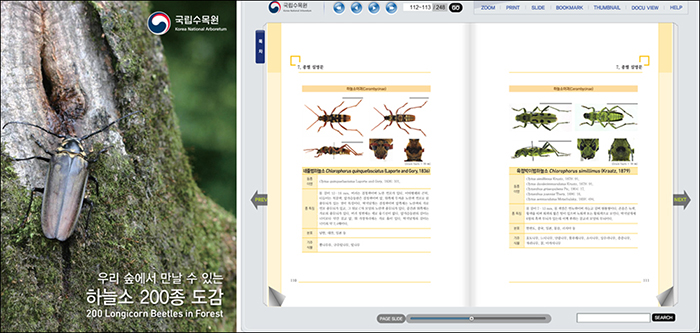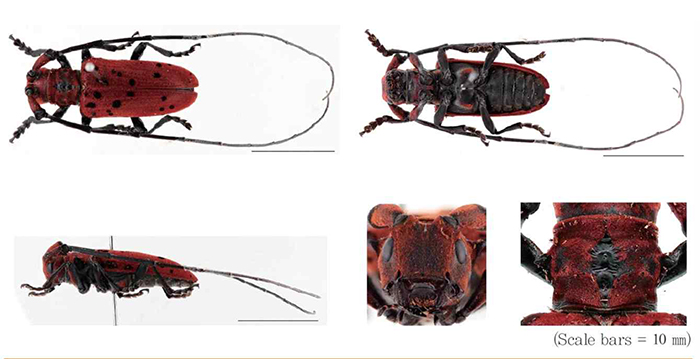
The Korea National Arboretum publishes '200 Longicorn Beetles in Forest' as an e-book on Feb. 3. The book contains information on 200 different species of beetles that are found in Korean forests.
A research book covering some 200 different species of beetles found in Korean forests has been published as an e-book.
Released on Feb. 3, "200 Longicorn Beetles in Forest" provides information on a wide range of beetles studied by the Korea National Arboretum from 2009 through 2016. The book contains detailed specimen photos, as well as shots of the beetles in their natural habitat. Information on physical traits, distribution, habitats and plants they feed on can also be found in the book.

The Rosalia coelestis (루리하늘소), now a rare species, is one of the most colorful beetles that inhabit Korean forests.
Around the world, there are some 33,000 species of Longicorn beetles. In Korea, around 360 different species have been documented. Beetles are a beloved species among insect lovers, with hard exterior shells that show off patterns and bright colors.
Beetles can easily be spotted in forests, but, aside from aesthetics, the animals perform some very important tasks in their ecosystems. Beetles that feed on dead trees help to decompose the forest, while other species help to pollinate flowers.
Some longicorn beetles, like the Callipogon relictus (장수하늘소) that is on the brink of extinction, as well as rare species like the Schwarzerium quadricolle (초록하늘소), the Rosalia coelestis (루리하늘소) and the Psacothea hilaris (울도하늘소) are in need of protection.

The Eupromus ruber (후박나무하늘소) is a species of longicorn beetle that feeds on silver magnolia trees.
"It's our hope that our research, released as an e-book, will help to raise awareness about the longicorn beetle and the diverse range of species that can be found in forests across the country," said Lee Yu-mi, head of the Korea National Arboretum.
The e-book can be viewed and downloaded from the Korea Forest Service (http://bit.ly/2k7REHX) and the Korea National Arboretum (http://bit.ly/2jJNiDz) websites.
By Lee Hana
Korea.net Staff Writer
Photos: Korea National Arboretum
hlee10@korea.kr